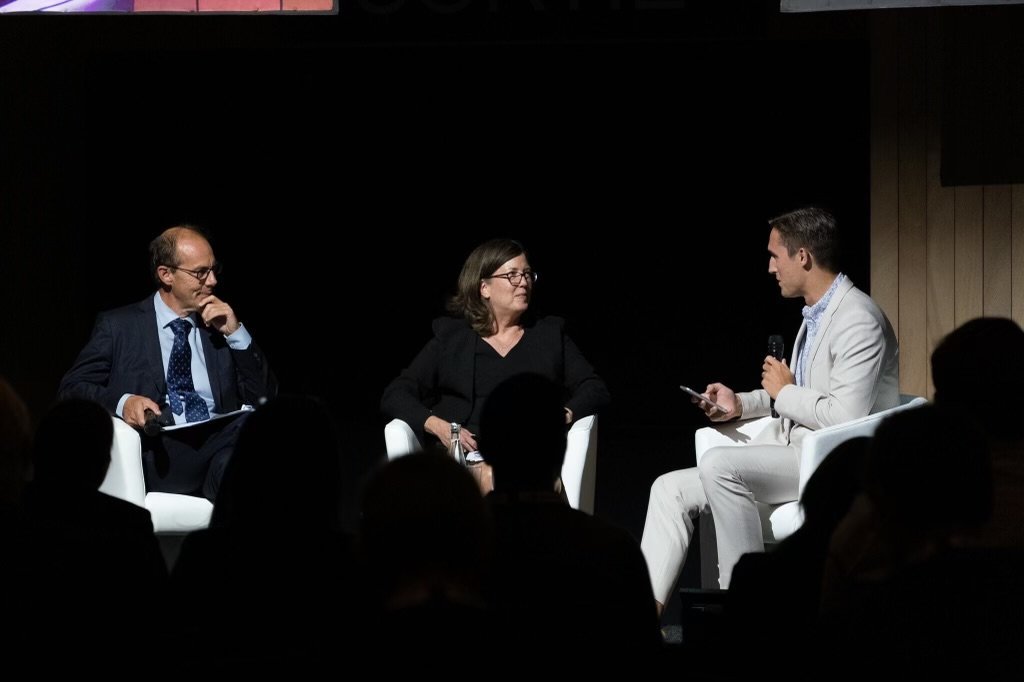When touring colleges, The King’s College might have looked a little different from other colleges and universities. Instead of a campus built on a plot of land, King’s occupies three floors in a Lower Manhattan office building. If you were to look through some of the brochures, you would see the phrase, “New York City is your campus.” But is this really the case for all students?
King’s currently has one on-campus housing location in Downtown Brooklyn. The commute to school poses unique challenges and complicates daily functioning for students with disabilities looking to possibly attend King’s.
The most affordable and practical way for students to commute to school is, by far, the subway. No other mode of transportation in New York City is as comprehensive or cost-effective as the subway.
Still, the Metropolitan Transportation Authority (MTA) public transportation system must take several strides to make the subway system more accessible.
Why is the MTA in New York City so notoriously inaccessible?
The MTA subway system is an artifact from a world before the passing of the Americans with Disabilities Act of 1990. While this law focused on protecting Americans with disabilities from discrimination in the workplace, it also mandated that public places be accessible to people with disabilities.
The New York City Subway opened in October 1904, which means they were constructed long before the accessibility mandates. Most buildings in New York City were also built before the passing of the ADA, which further limits the accessibility of the city as a whole.
Currently, just 126 out of 472 stations are accessible. Thirty years since the passing of the ADA, more than two-thirds of all subway stations remain inaccessible.
City Point, the only on-campus housing location King’s offers, is described as “a fifteen-minute train ride from campus” on the King’s website. However, this is only true from the Hoyt Street station, which is currently inaccessible.
“Most people use the Hoyt Street station, which is not accessible to me,” said Lauren Brooks, a Fall 2022 NYCJ Semester student who uses a wheelchair. “So, I either go to Jay Street-Metrotech, DeKalb Avenue or, if worse comes to worst, Atlantic Avenue, which is a 20-minute walk.”
ADA presented subway stations with a unique challenge when forced to transition to accessibility. Most stations are under busy streets, so reconstruction is constrained by the location of the tracks. But what do subway stations need to be considered accessible?
The vast majority of stations are only accessible through stairs from the street level, the mezzanine, and finally, the platform. Stairs are not an option for someone who uses a wheelchair, crutches or a walker. Adding elevators for subway stations is difficult because construction is restricted by underground infrastructure, space available on street level, and space available within the station. Additionally, people with disabilities need escalators to make traveling from the station to the platform more accessible.
The MTA must also address the gap between the platform and the train to improve accessibility. For someone using a walker or a wheelchair, this gap is hard to avoid when boarding and exiting the train. These gaps can often be too wide, too high or too low for someone to safely travel from the train to the platform or vice versa.
“If you were in the middle, the front or the back, we still need to work on being able to get a wheelchair or walker in safely,” said Christopher Greif, Executive Member of the New York City Transit Riders Council, in an interview. “We need to know what stations have this problem.”
Brooks echoes the problem of the gap between the subway car and the platform.
“I was coming home one night, and because of the gap, my front wheels got stuck, and my friends had to push my chair up onto the subway,” said Brooks.
Aside from public transit, Brooks also faces the inaccessibility of New York City as a whole.
“New York, in general, is terrible with accessibility,” said Brooks. “But nowhere is great. I'm from the LA area, so I'm not coming from greatness either. Broken or cracked sidewalks that pushed me onto the street, that's the norm here. I didn't expect a utopia. I would be silly to.”
On her TikTok account, Brooks documents the inaccessibility of establishments in New York City. One post, which showed a coffee shop entrance only accessible by a step, amassed 820,700 views.
For future students, there is hope. In June 2022, the MTA pledged to make 95% of stations accessible by 2055,
Under the terms of the agreement, the MTA will add elevators or ramps to create a stair-free path of travel at 95 percent of the currently inaccessible subway stations by 2055.
Andy Byford, who served on the New York City Transit Council from 2017 to 2021, was instrumental in the recent strides of modernization in the subway. He spearheaded the “Fast Forward” program, which along with signal improvements, aims to make 50 more stations accessible.
“Since Andy Byford was the president of MTA, there has been more accessibility,” said Grief. “More elevators, more ramps, bigger signages. They’re working hard to make sure public transportation is the safe way to travel.”
From Oct. 2019 to Jan. 2022, the Jay St. Metrotech station was used as an “accessibility lab” for new features intended to make navigating the subway easier for those with cognitive, visual or motor impairments. These include “tactile guideways,” colorful way-finding stripes on station floors and stairs, Braille signage and interactive subway maps.
Officials are also testing five free apps to assist people with disabilities, such as NaviLens, which provides sign information in audio for visually impaired people. This new technology is a great first step in laying the groundwork for a more accessible future of public transportation in New York City.
“I would like to see them do more,” said Grief. “There are areas that need to be a little clearer and colors that need to be a little brighter. The screen that they have there is a start. I have to thank Andy Byford again because he started focusing on accessibility with knowledge.”
For prospective students at King’s with a disability, there is still work to be done to make the transportation system in New York City accessible for everyone to use.
While King’s is not presently able to be everyone’s campus, at least comfortably, the groundwork is being laid for a more accessible future.
Drew Richardson is a contributor to the Empire State Tribune. He is a senior majoring in Journalism, Culture and Society and Business Management. He serves as the Production Intern at CNBC’s “Closing Bell: Overtime” show. This article originally ran at the EST this spring.




